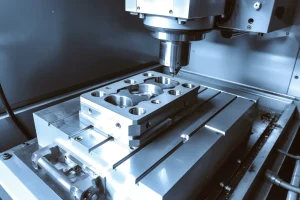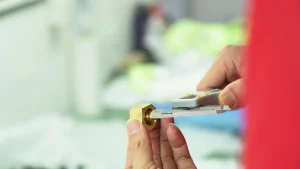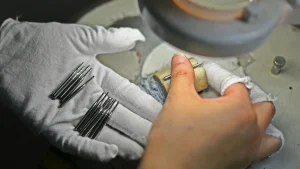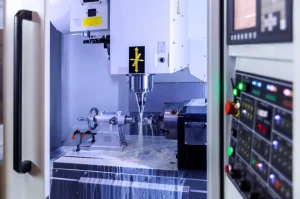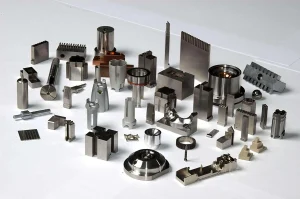我们今天使用的大多数产品是CNC加工的, 从家用电器到医疗用品, CNC has become a part of us without us even realizing it. Rapidefficient production has a unified standard, choose computer numerical control (数控系统) to make the work better. CNC has a variety of applications, such as flame or plasma cutting, 成型, 冲孔, laser cutting and welding.
在本文中, we will learn what makes CNC machines work well in the manufacturing industry.
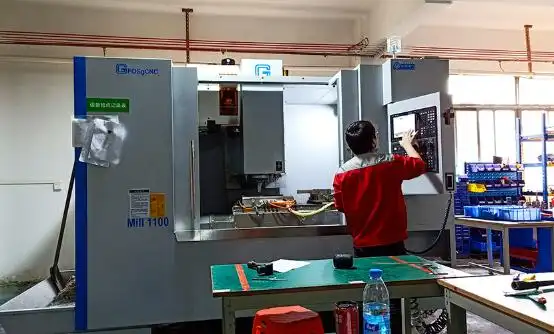
What is CNC? 它如何工作?
CNC is the abbreviation of computer numerical control. It is a pre-programmed computer software that guides the operation of factory equipment and machines. Using subtraction, unnecessary parts can be removed from a large piece of material.
Before the advent of CNC machines, the industry used manually controlled handwheels or levers for operation. CNC machines work using a language called g-code, which transmits precise measurements of production such as feed rate, 速度, position and coordination to the computer.
CNC machines can produce durable, precise and heat-resistant parts. Casting, metal forming, jewelry and other technical applications are all within its scope. It is a processing instrument favored by most industries.
The number of times a CNC machine is used is only zero times and countless times. The parts it produces are strong and accurate in size. Whether it is in engines, aircraft or machinery, or in industries such as engraving, lettering and woodworking, it can be found.
What are the different types of CNC?
1. Milling Machine
Uses a rotating cutting tool to carve components. It can create slots, 孔, shapes, 凹槽, notches and specialized faces.
2. Lathe
It is a type of machine tool that produces cylindrical objects. The material or part is held in place and rotated by the spindle as the tool working on it is mounted and moved on different axes.
3. Drilling Machine
Has the ability to accurately locate the drilling position. This type of machine can drill holes in the workpiece and can also perform reaming, back boring and tapping.
4. Plasma Cutter
It has a plasma torch for cutting metal.
5. Grinder
It uses a rotating wheel to flush out the material by grinding or grinding it into the desired shape and is easier to program than milling and lathes.
What are the benefits of CNC machining?
1. Accuracy and consistent product quality
The process is more precise and repetitive, which minimizes time consumption, reduces errors in the manufacturing process, and eliminates unnecessary waste.
2. High production speed and improved efficiency
The process is automated, thereby increasing the speed and quality of production.
3. Safety of machine operators
CNC machines work behind transparent safety doors, which makes them much safer than manually operated machines.
4. More cost-effective
Manual machining requires one operator per machine, but this requires fewer machine operators. A skilled operator can already run several tools at the same time.
What products can CNC machines make?
CNC machines have a wide range of applications, making them the machines of choice for different kinds of industries. This is a point that most engineers agree on.
汽车 & Transportation
汽车: Parts for buses, cars, motorcycles, trucks, CNC can automate the production of these parts.
Train: It cuts and shapes solid exterior parts for public and private trains.
航天: Some exterior and interior parts of aircraft and spacecraft are products of CNC machines.
Maritime: The exterior and interior components of many ship models come from CNC.
Original Equipment Manufacturers (OEMs)
OEMs use CNC machines in the metalworking process to produce a variety of parts and product designs.
原型制作: CNC has 3D and 2D capabilities to make prototypes for parts and finished products.
Mass Production Parts: This machine can automate the production of some parts.
Consumer Electronics and Other Products
For electronics and other consumer products, high precision in the production process is a must.
Electronic Components: The machine cuts and shapes sensitive metal parts to make electronics functional.
Housings and Casings: CNC can also make housings and casings.
Electrical Parts: Heavy parts that make up reliable household appliances.
CNC machines work with metals, 塑料, and many other materials, thus aiding in multiple steps of consumer manufacturing.
Building and Construction
Architectural Elements: Materials such as wood and metal for architectural elements like doors can come from CNC.
Pipes and Railings: Bending of metal pipes and ducts used in construction works.
Architectural Models: CNC is also best at making detailed structural models out of plastics and composite materials during the architectural design process.

